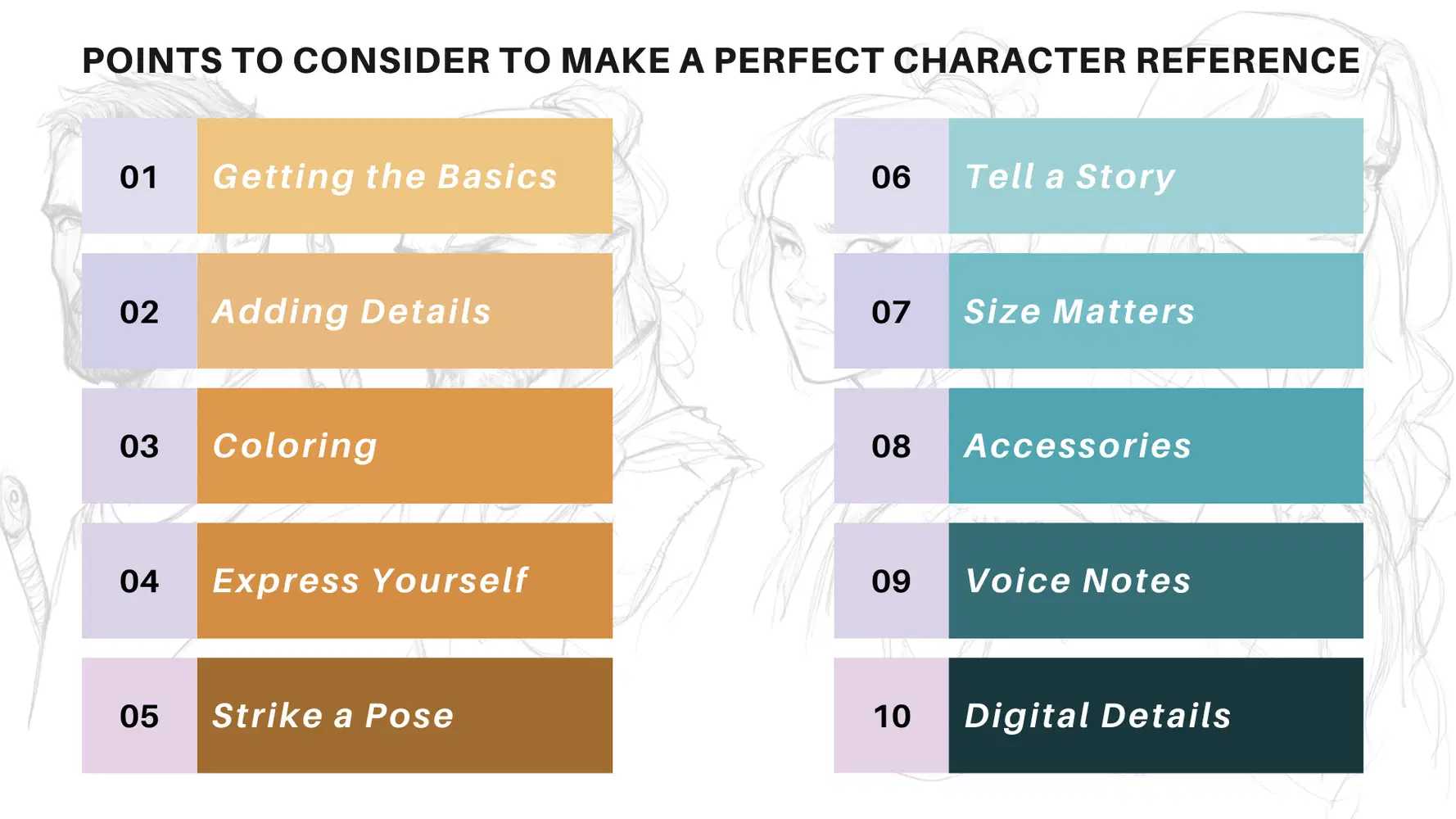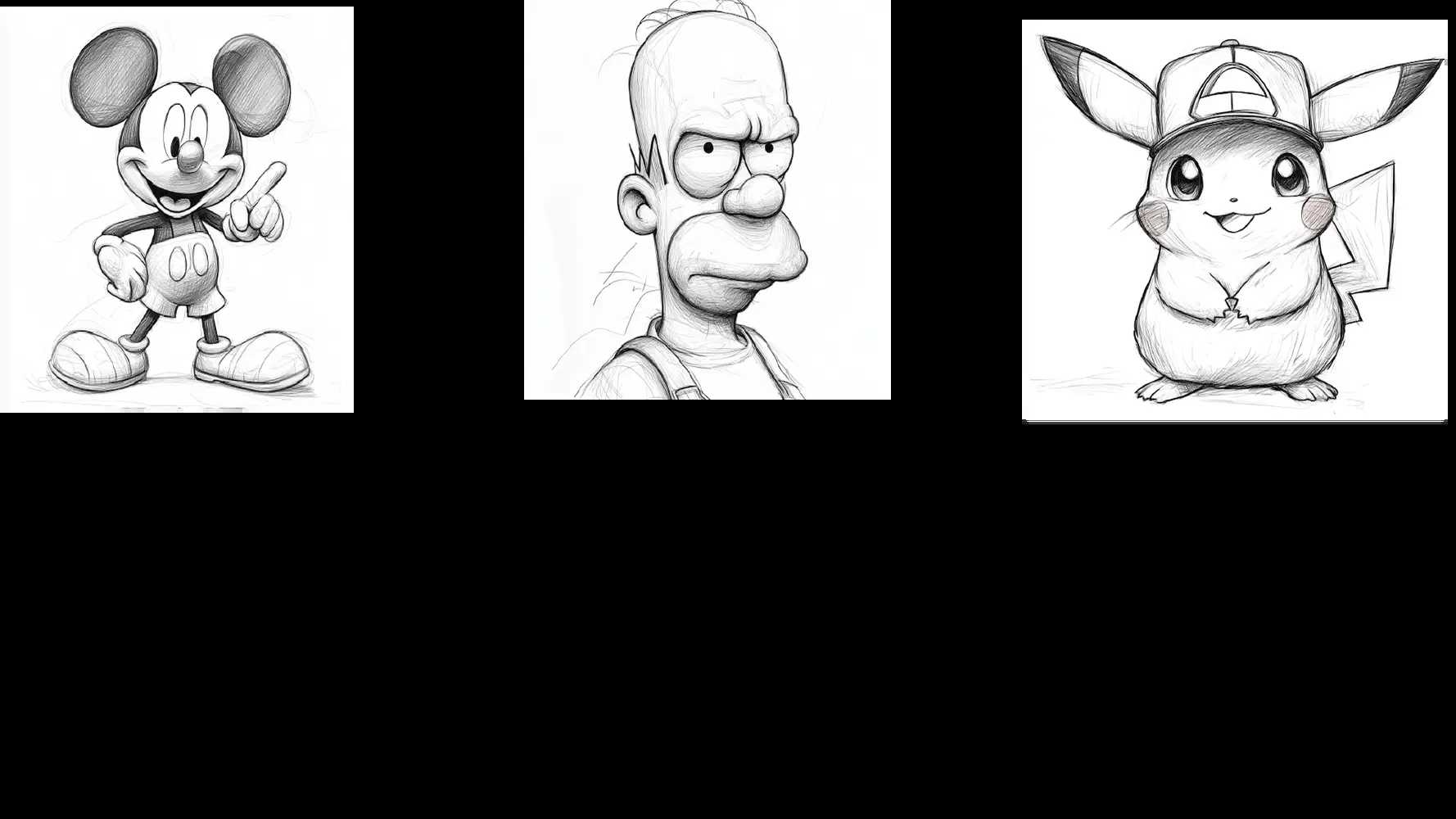What Exactly is a Cartoon Character Reference?
Think of a cartoon character reference as the ultimate blueprint for your animated creation. It’s not just a simple sketch—it’s a detailed guide that captures everything from physical traits to personality quirks and character traits. This reference serves as a go-to document for anyone working on the character, ensuring consistency and authenticity. Here’s what a thorough character reference might include:
- Character design drawings in the front, side, and back views
- Color palette
- Facial expression and the emotions
- Key poses or actions
- Personality traits and history
- Voice actor notes
- Relative size to other characters
You can check many good examples for each of the above at Character Bazaar.
Let me tell you, these change the game in the animation process.
From Pencil to Pixel: The Evolution of Character Reference
Not too long ago, character references were painstakingly hand-drawn, with lead animators spending hours meticulously crafting each one and filing them away in massive folders. But oh, how the times have changed! The digital revolution has completely transformed how we create and use these essential tools, making the process faster, more flexible, and far more dynamic.
Not just the tools, but the content of the character reference has undergone changes too. Modern references would probably include:
- Animation cycles for common actions
- Detailed breakdowns of character rigs for 2D animation
- Lighting and shading information
- Reference for different ages or alternate versions of the Character
This evolution has made character references more comprehensive and easily available than ever before.

How to Draw the Perfect Character Reference in Easy Steps
Now, let’s move on to the steps:
- Getting the Basics: Quickly outline the rough shape of your character and the proportions. This is, in essence, where the skeleton of your character reference begins.
- Adding detail: Fill in the character with further details, being mindful of the angles as well.
- Color it in: Fix your character’s color palette; write down the colors in digital codes.
- Express yourself: Draw the character in different mood states. This will help an animator get into a certain mood.
- Strike a pose: Depict the key poses that define the personality and movement style of your character.
- Tell a story: Write a short bio for the character; make everybody realize what drives him and where he comes from.
- Size matters: Include a description of how large/small your character is in relation to others.
- Accessories: Add details of costumes/props integral to your character.
- Voice notes: Add voice and speech notes for your character, if relevant.
- Digital details: Include rigging/animation constraints on a character design for 3D characters.

Let me repeat; a good character reference should always be clear, comprehensive, and easy to understand for any member of your team.
The Hidden Complexities: When Characters Evolve
Here’s a fun fact: character references aren’t permanent! As a series progresses or characters evolve, their references often get updated—especially in long-running shows where characters age or change significantly. Take a look at how some iconic characters have transformed over time!

Keeping character references up-to-date ensures that your animation remains consistent even as your characters grow and change.
Wrapping Up: The Unsung Heroes of Animation
From Mickey Mouse to the latest mobile game characters, character references have quietly been the unsung heroes of the animation industry for decades. These references ensure that your favorite characters stay recognizable and lovable, no matter where they appear. Behind every iconic cartoon character, there's a great character reference making it all possible.





















